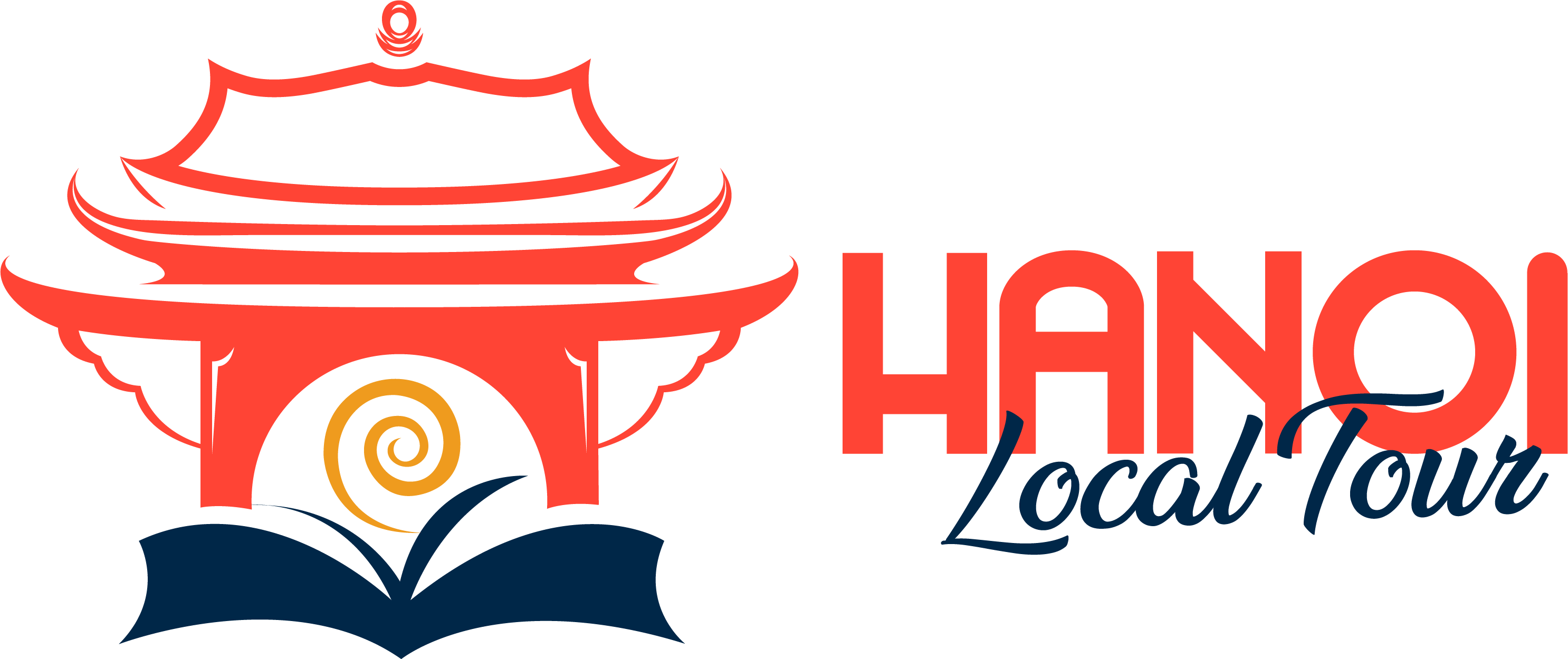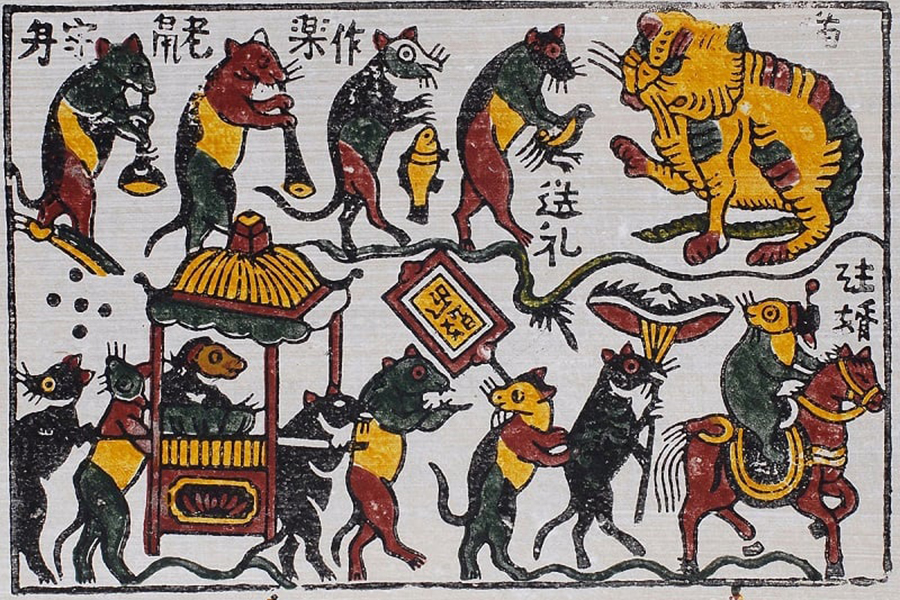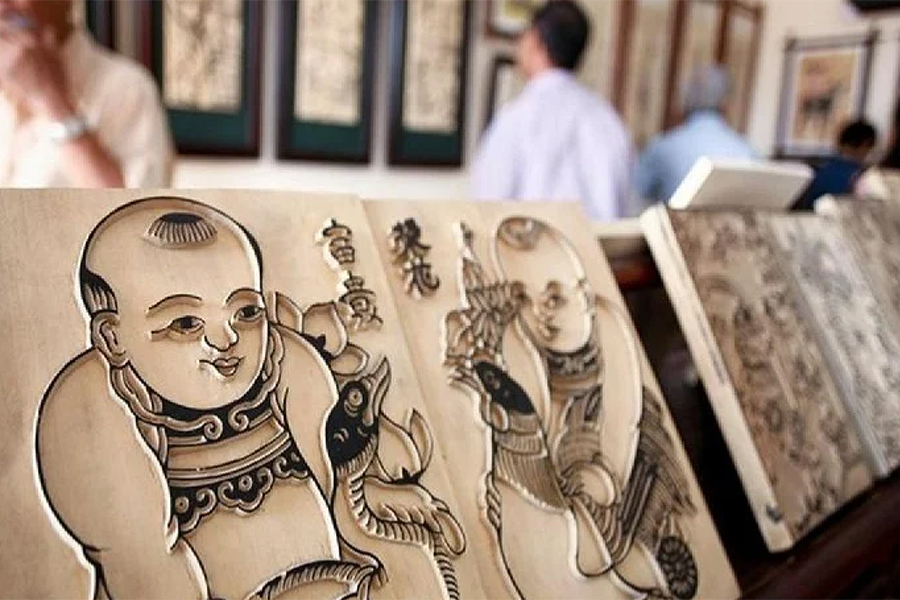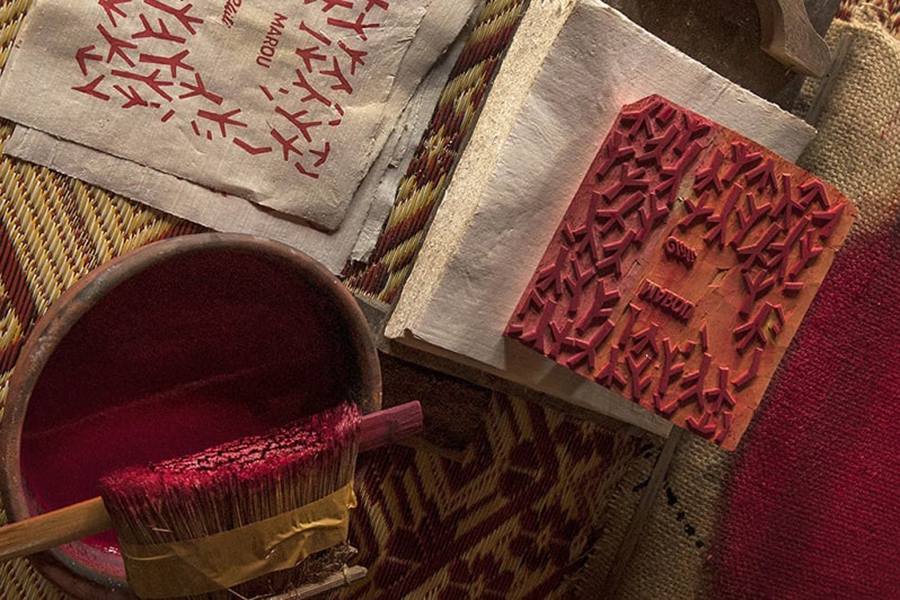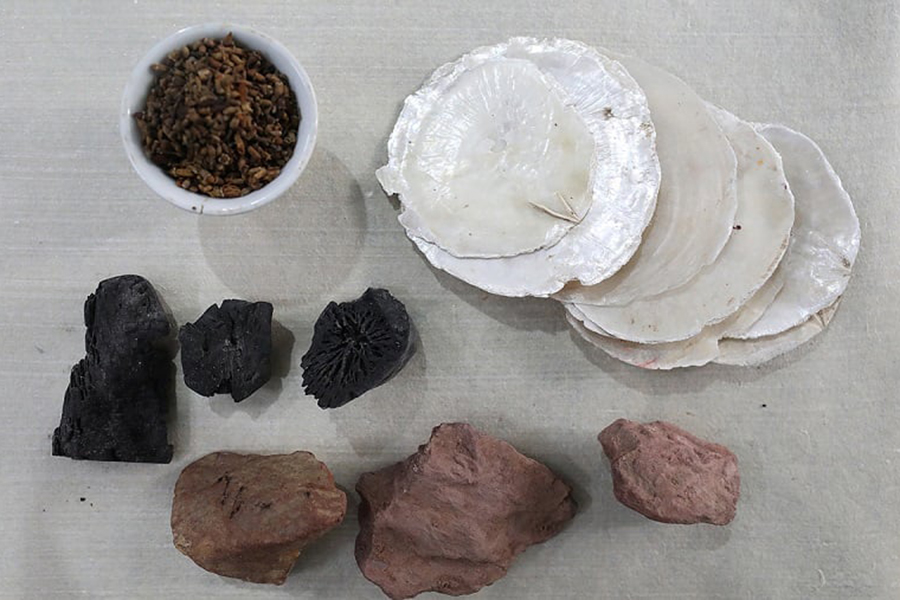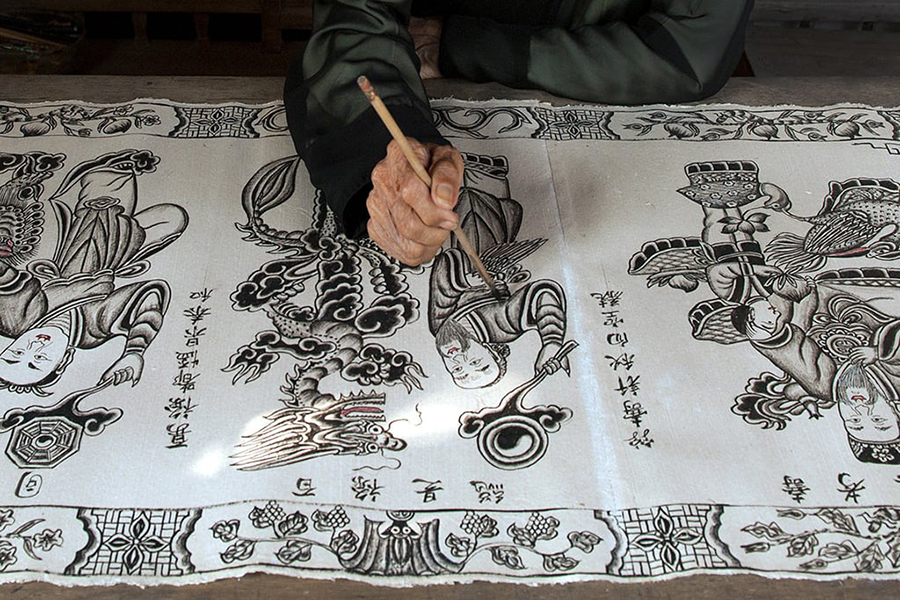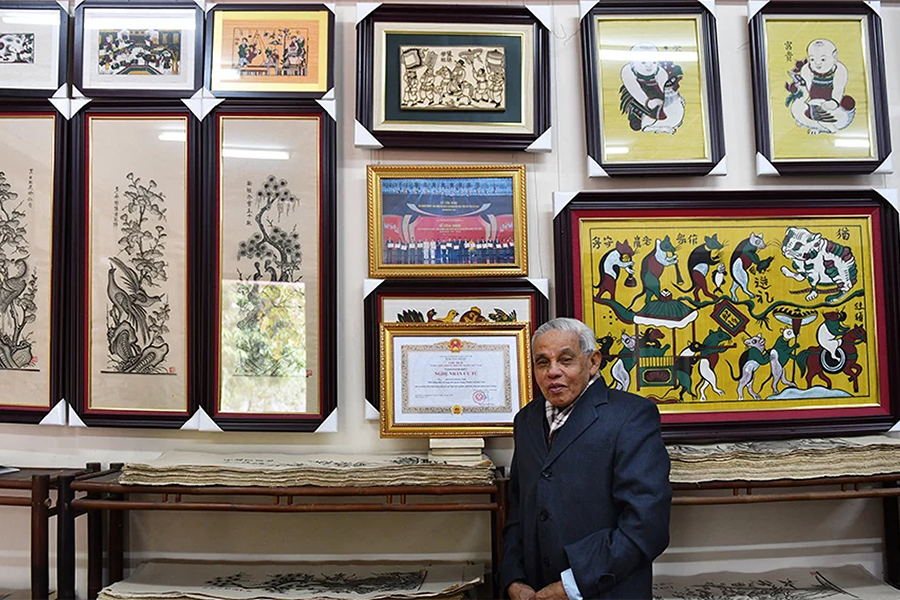Famous for its distinctive Dong Ho paintings, Dong Ho Folk Painting Village is a destination that attracts many visitors when traveling to Hanoi due to its proximity to the capital. Join My Hanoi Tours to explore detailed information about this traditional folk painting village in the article below!
Introduction to Dong Ho Painting Village
Where is Dong Ho Painting Village located?
Dong Ho Folk Painting Village, a location of interest for many travelers exploring this famous tourist spot, is situated along the Duong River in Song Ho commune, Thuan Thanh district, Bac Ninh province, approximately 16km from the center of Bac Ninh city. Due to its close proximity to Hanoi, about 35km away, this destination is also referred to as Dong Ho Folk Painting Village Hanoi.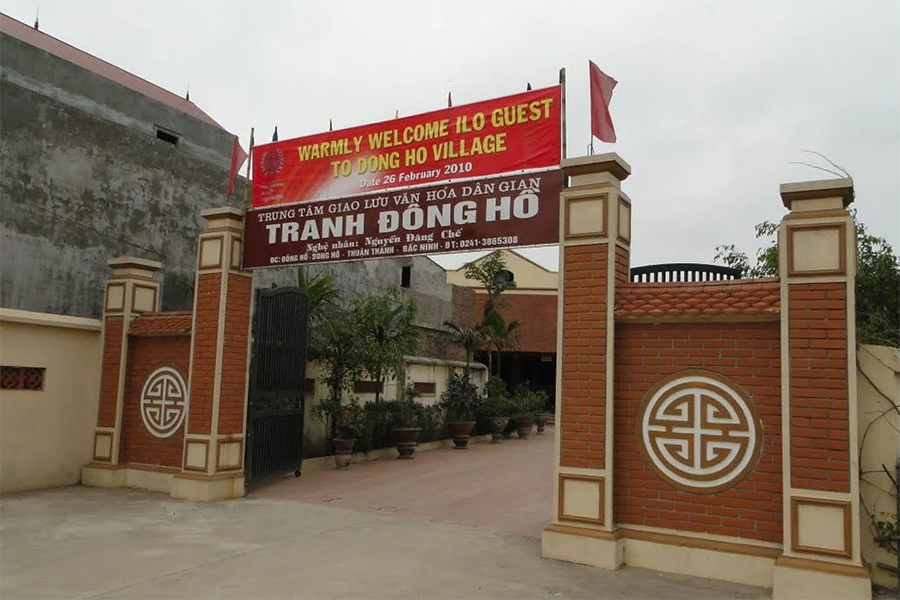
To reach Dong Ho Folk Painting Village, travelers can follow National Highway 38, cross the Ho Bridge, turn right onto Thien Duc Street, and continue for approximately 2km. Visitors can choose suitable means of transportation based on their schedule:
- Personal vehicles (motorcycles, cars, etc.): Take Route 5 (National Highway 5) towards the Phu Thi intersection, then turn left onto National Highway 18B. Continue straight through Pho Sui, Keo market, Dau market, and then turn left onto the embankment road. After that, make a right turn and travel an additional 3km to reach Dong Ho Folk Painting Village. Alternatively, from Dau market, head straight to Ho town, turn left onto National Highway 38, and near Ho Bridge, turn left onto Thien Duc Street. Continue straight for about 2km to arrive at Dong Ho Folk Painting Village.
- Bus route 204 (Hanoi – Thuan Thanh, Bac Ninh): The route begins from the Long Bien Transfer Point – Nguyen Van Long – National Highway 5 – Phu Thi intersection – Pho Sui – Keo Pagoda – Duc Hiep – Thanh Hoai – Tam A – Ho town (Thuan Thanh). From Ho town, travelers can take a motorbike taxi for a few kilometers to reach Dong Ho Folk Painting Village.
History of Dong Ho Painting Village
When visiting this place, tourists will be introduced to the history of Dong Ho Folk Painting Village. Originating in the 17th century in Dong Ho Village, Song Ho commune, Thuan Thanh district, Bac Ninh province, the art of making paintings here has a history of over 400 years.
According to historical records, around 1945, Dong Ho Village had 17 lineages, and all of these lineages were involved in the art of painting. Despite the ups and downs of history, today, Dong Ho Village only has 2 families continuing the tradition of painting, namely the families of the artisans Nguyen Dang Che and Nguyen Huu Sam.
What makes Dong Ho Paintings special?
Dong Ho paintings are beloved for depicting familiar themes closely associated with the rural landscape and the simple daily life of the Vietnamese people. The artisans of Dong Ho Village skillfully extract and apply materials from nature to create traditional colors that are both vibrant and highly durable: brown from the Chàm leaf, red from the bark of the Van tree, black from the ash of bamboo or Voan tree,…
These remarkable paintings are printed on Dó paper, a handmade paper processed from the Dó plant found in the forest. The paper’s surface is typically coated with a layer of resin or a mixture of pearl powder and shell powder to create a sparkling appearance. Therefore, Dó paper is also known as Điệp paper.
To create lively paintings, craftsmen use engraving boards. There are two types of engraving boards: color engraving boards and line engraving boards.
Line engraving boards are usually made from jackfruit wood or thị wood, and the engraving tools, also known as ve tools, are made from hard steel. Color engraving boards are made from fatty wood for better color retention.
The process of creating Dong Ho paintings involves the following steps:
- Step 1 – Prepare Dó paper: After harvesting from the forest, craftsmen crush and grind the material into fine powder, then process it into Dó paper.
- Step 2 – Print the painting: Craftsmen print the colors onto the painting to form the desired image. Typically, a painting requires five engraved plates, printed in five steps.
- Step 3 – Sun-dry the painting: After printing, the painting is sun-dried to prevent smudging and enhance colorfastness.
Exploring the beauty of Dong Ho Painting Village
Dong Ho Painting Village is one of the famous tourist destinations near Hanoi. Visitors here can experience various exciting activities, adding charm and memorable moments to their Dong Ho Village travel. Some activities that travelers should not miss when visiting Dong Ho Folk Painting Village include:
Check-in at Dong Ho Painting Village
Dong Ho paintings are not only authentic but also vibrant, conveying meaningful messages. When visiting this place, you can check-in with unique paintings created by the skilled hands of Dong Ho villagers.
Learn how to create paintings following the guidance of Dong Ho artists
Not only can visitors admire Dong Ho paintings, but they can also actively participate in the painting process to better understand the uniqueness of this traditional craft. With the guidance of the artisans in Dong Ho Village, Bac Ninh, you can create a vibrant and beautiful painting yourself.
Participate in an interesting Dong Ho Painting exhibition
Over 100 artifacts and paintings depicting the evolution of Dong Ho paintings are exhibited at the Vietnam Fine Arts Museum. Here, you can closely observe the iconic Dong Ho paintings such as “Mouse Wedding,” “Paying Homage to the Ancestors,” “Cockerel with Rose,” “Prosperity and Wealth,” “Buffalo Playing the Flute,” and many more.
Witness the traditional folk painting festival in Bac Ninh
The Dong Ho Village Festival takes place annually from the 14th to the 16th day of the third lunar month, attracting numerous tourists with its unique folk paintings. This festival is one of the remarkable celebrations, making it an ideal destination for those looking to enjoy the festive atmosphere during the spring season.
Meet outstanding artisans in Dong Ho Painting Village
When visiting Dong Ho Folk Painting Village, tourists also have the opportunity to meet outstanding artisans like Master Nguyen Huu Sam and Master Nguyen Dang Che to learn about the history and explore the uniqueness of the traditional craft in this area.
Visit other famous traditional craft villages
Apart from Dong Ho Folk Painting Village, you can also explore many other unique traditional craft villages around Hanoi. Some interesting craft villages that tourists should visit to make their trip more enjoyable include:
- Van Phuc Silk Village: Renowned for its traditional silk-making, Van Phuc is a place where tourists can explore the traditional silk production process and purchase unique handmade products.
- Bat Trang Pottery Village: With over a thousand years of history, Bat Trang is famous for its artistic ceramic products, and it’s a place where tourists can actively participate in pottery making.
- Thach Xa Bamboo Dragonfly Village: Known for the production and processing of bamboo products like dragonflies, decorative lanterns, and household items.
- Chuong Hat Village: A traditional craft village famous for producing various traditional Vietnamese hats.
- Ban Yen Nhan: A traditional craft village renowned for the production of ceramics and other traditional handicrafts.
Lying gracefully along the poetic Duong River, Dong Ho Folk Painting Village, with its simple and rustic beauty, exudes a warm and endearing charm. The unique experiences here are sure to create unforgettable memories. I hope that with the shared information, you have gained additional insights into potential destinations, enriching your Hanoi trip with friends and family.
